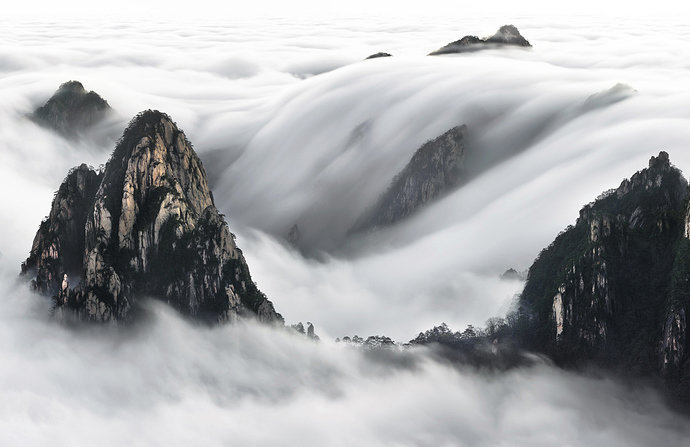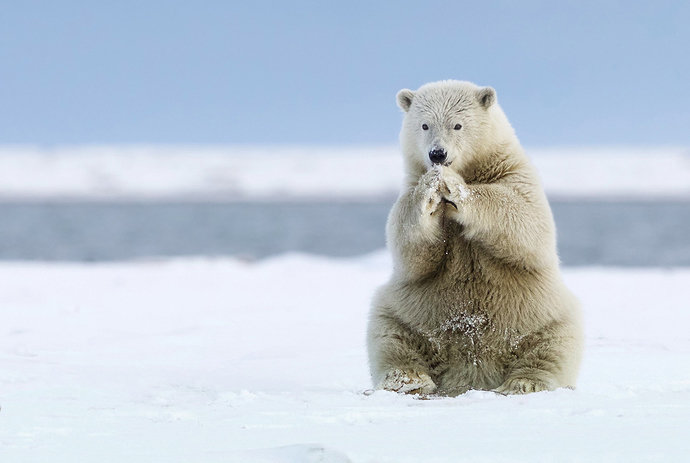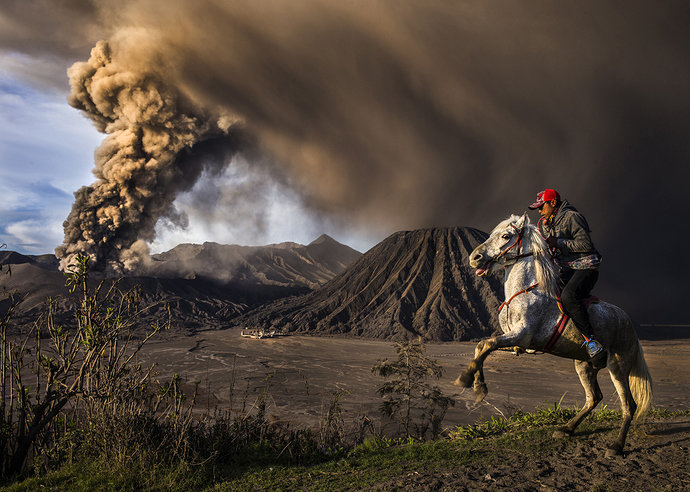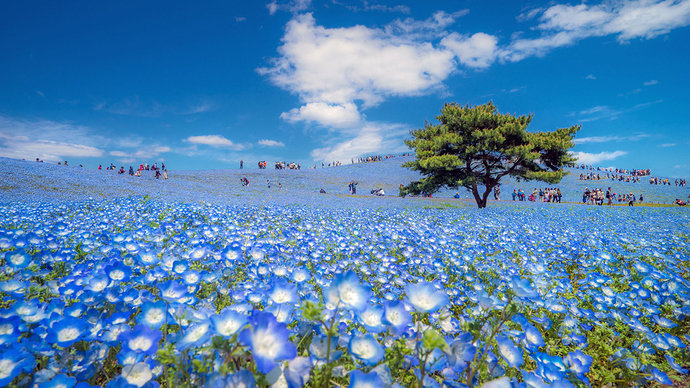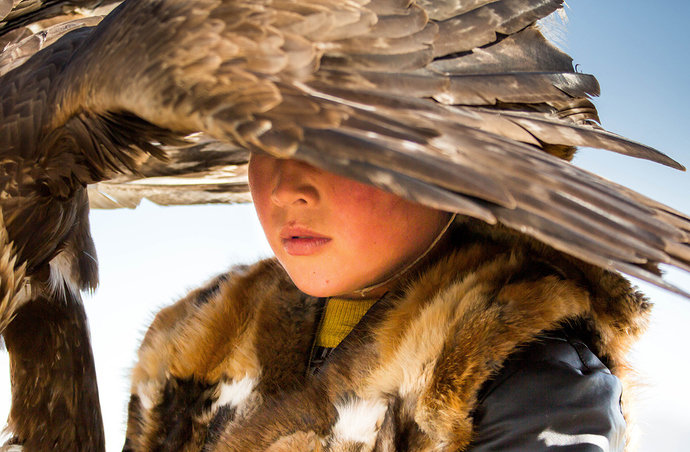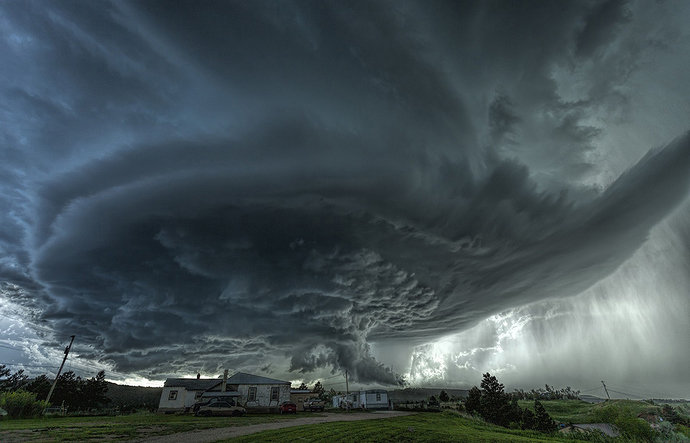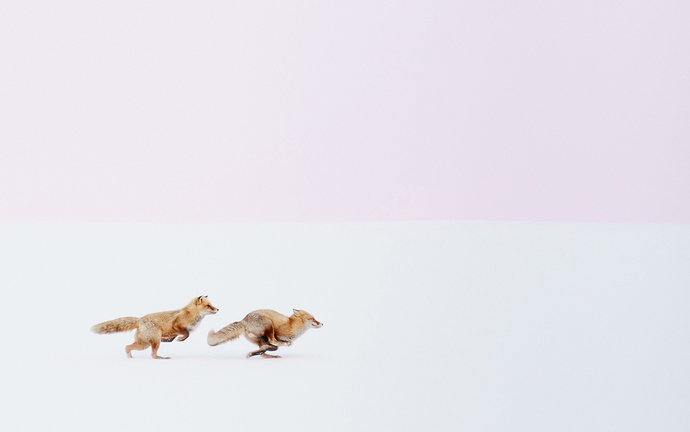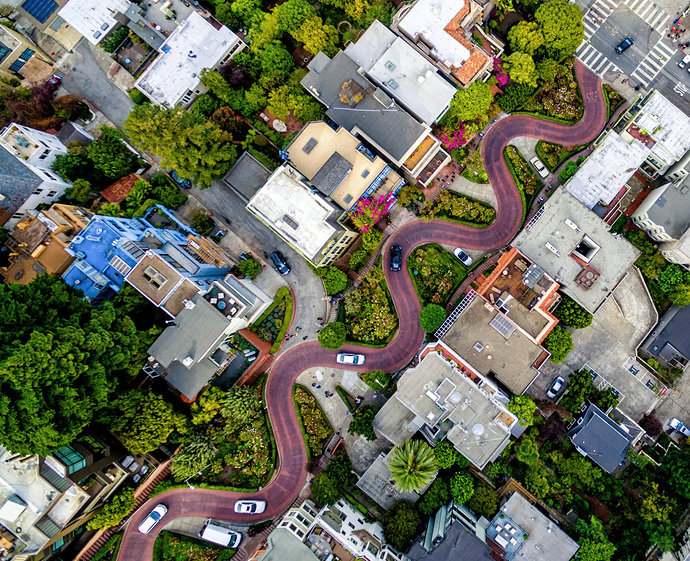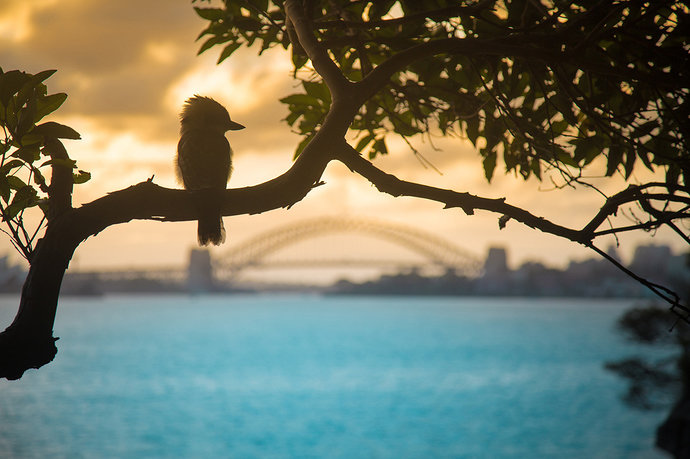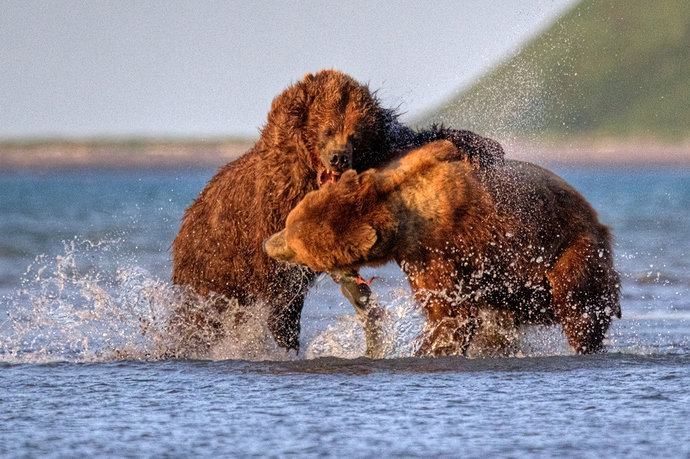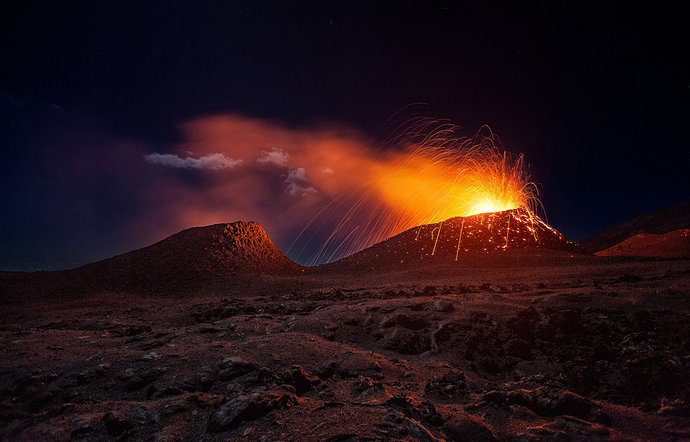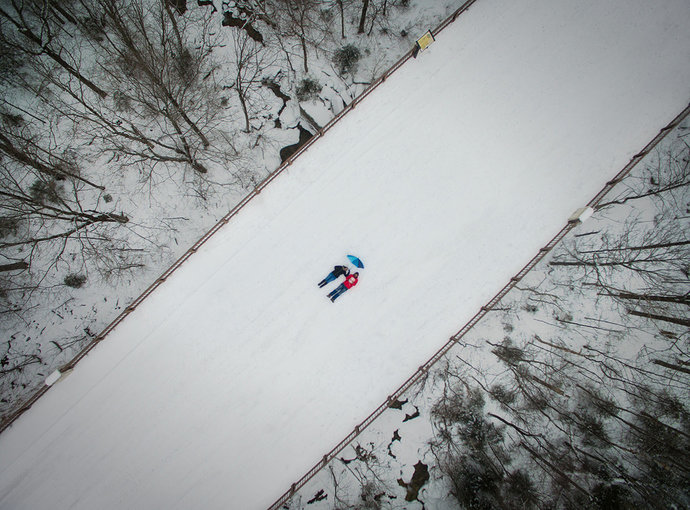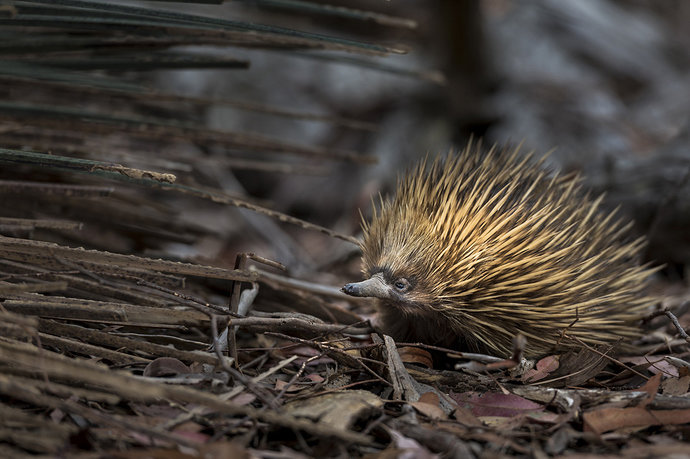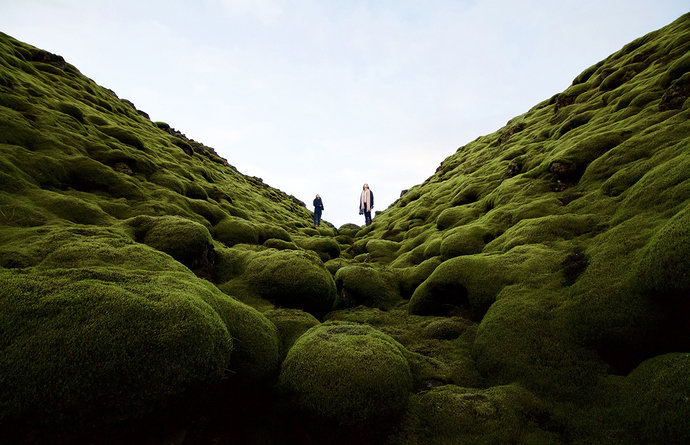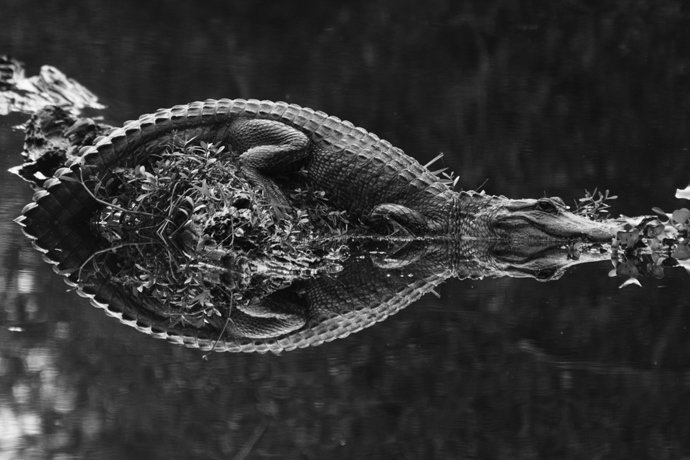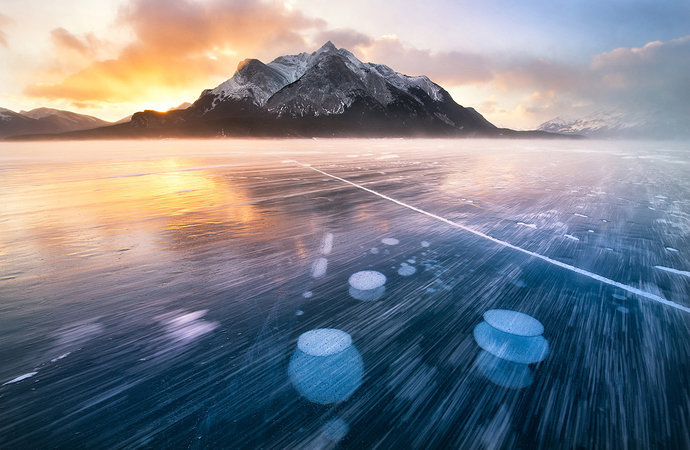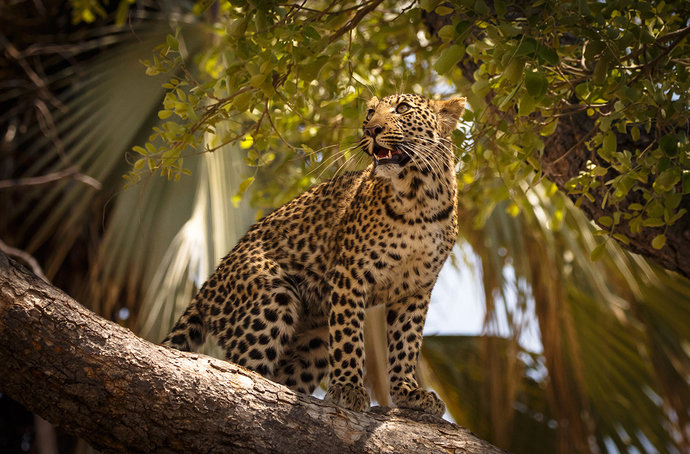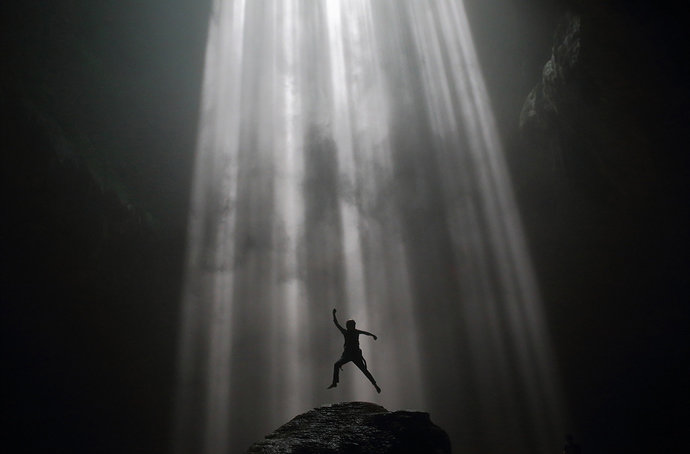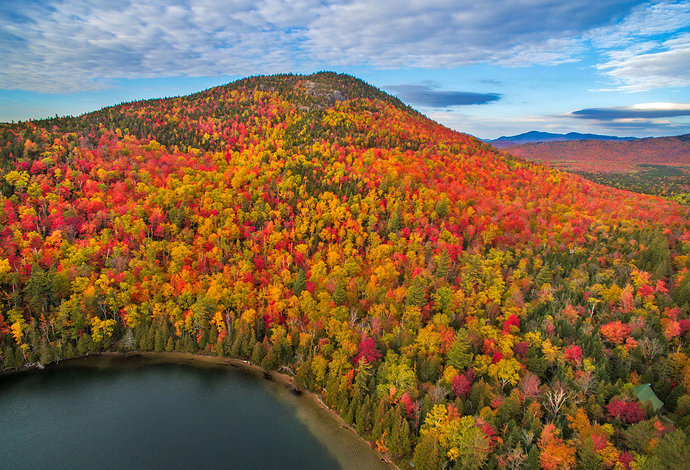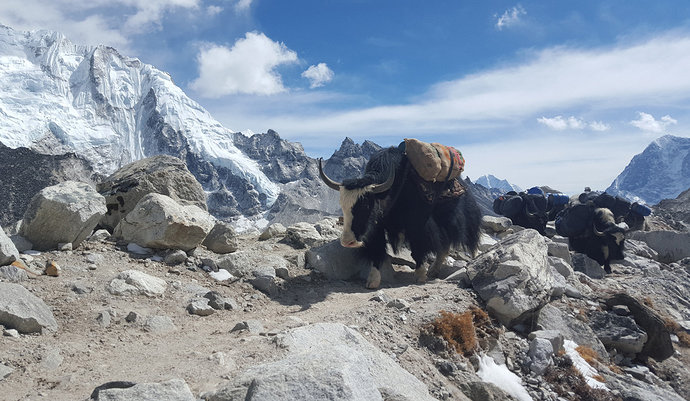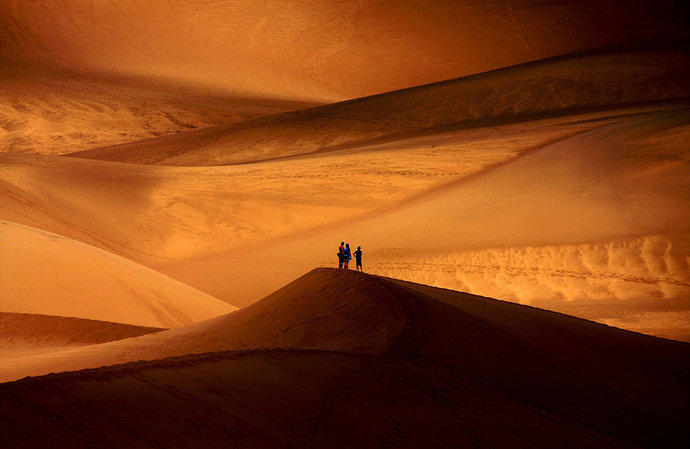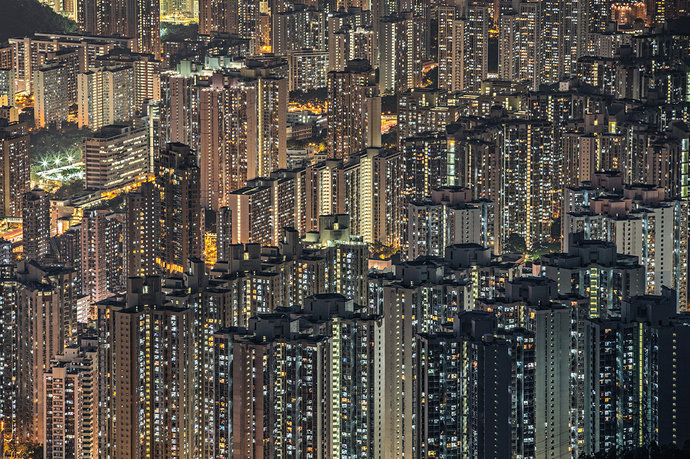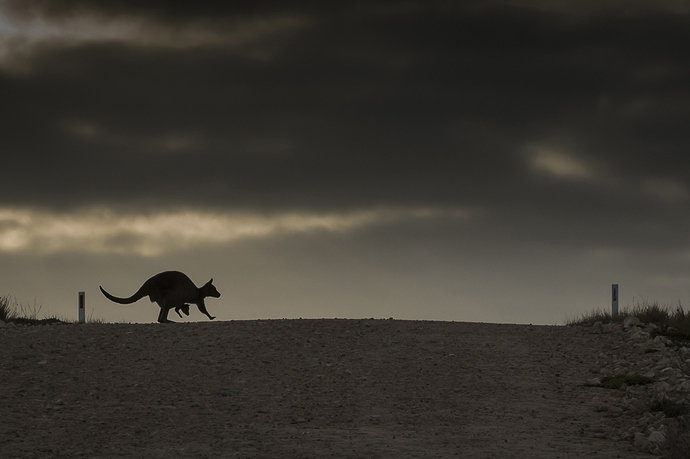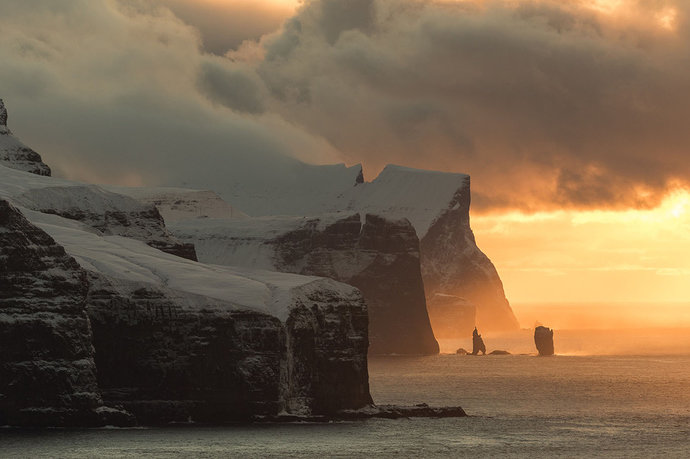This image was captured very early in the morning after climbing Yellow Mountain at 3 a.m. and waiting for few hours in the cold and wind at -4 degrees. #
© Thierry Bornier / National Geographic Travel Photographer of the Year Contest
Polar bears rely on the sea ice to reach their seal prey. Global warming caused by humans has significantly impacted the sea ice, which is negatively affecting the Polar bears in many ways. Photographed in Kaktovik, Alaska. #
© Missy Mandel / National Geographic Travel Photographer of the Year Contest
This picture was taken during Mt. Bromo eruption, the horse seems a little agitated due to the sound of the eruption. #
© Reynold Dewantara / National Geographic Travel Photographer of the Year Contest
Spring in Japan. People love to walk in this blue carpet flowers (Nemophila blue flowers) at Hitachi seaside park in Ibaraki. #
© Danilo Dungo / National Geographic Travel Photographer of the Year Contest
A young Kazakh boy with his eagle which will perform at the traditional Eagle Festival held in Bayan-Ölgii, Mongolia. Eagle hunting is a heritage passed from father to son, generation after generation, by the Kazakh people of the Altai mountains. #
© Massimo Rumi / National Geographic Travel Photographer of the Year Contest
Amazing supercell produces over the town of Blackhawk, South Dakota, back on June 1, 2015. Flash flooding would occur near Rapid City. #
© James Smart / National Geographic Travel Photographer of the Year Contest
Romance is in the air. It was the time of day immediately following sunset. Photographed in Biei, Hokkaido, Japan. #
© Hiroki Inoue / National Geographic Travel Photographer of the Year Contest
From the air, it’s much easier to see how Lombard Street snakes through the streets of San Francisco. One of the most iconic landmarks of San Francisco—with its eight sharp turns is said to be the most crooked street in the world. #
© Chris McCann / National Geographic Travel Photographer of the Year Contest
This kookaburra has the perfect view of Sydney Harbour and the bridge in the background. This is quintessential Sydney and Australia. #
© Rune Svendsen / National Geographic Travel Photographer of the Year Contest
Two big bears locked in battle for survival over a single salmon. This was at the beginning of the salmon run when the salmon were scarce and when a bear caught a fish the bear was swarmed by other bears trying to steal his catch and big battles would erupt. Katmai National Park, Alaska #
© James Anderson / National Geographic Travel Photographer of the Year Contest
The latest eruption of La Fournaise Volcano. Réunion Island. #
© Gaby Barathieu / National Geographic Travel Photographer of the Year Contest
This image is an aerial selfie image. We laid down on the bridge covered with snow and flew the drone above us to take this image. #
© Manish Mamtani / National Geographic Travel Photographer of the Year Contest
The Kangaroo Island echidna only exists in the wild on Kangaroo Island (off South Australia.) While extensive historic clearing of its habitat has significantly reduced the population size, its main threats now come from feral cat predation and road mortality. With less than 5,000 adults, its conservation status has recently been listed as endangered by the Australian Federal Government. #
© Douglas Gimesy / National Geographic Travel Photographer of the Year Contest
While on a road trip in Iceland, we stumbled across a sea of old lava flows that has, over the centuries, been blanketed in thick, green layer of moss. #
© Dylan Shaw / National Geographic Travel Photographer of the Year Contest
This alligator laid out in the middle of the waterway seeking what little sunshine was offered on this cloudy December day as we sailed by. I was struck by the poetic symmetry of reptile and its reflection in the swampy water. #
© Kyle Adler / National Geographic Travel Photographer of the Year Contest
When I was on a field trip in the Canadian Rockies in winter, we encountered big wind gust, and five of my teammates were blown away about 100 meters. The snow got thrown high up to the sky, and it traveled across the lake with obvious trails. I held my tripod tightly and captured this scene, with my eyes full of tears and my mouth filled with snow. #
© Victor Liu / National Geographic Travel Photographer of the Year Contest
Taken in Linyanti area Botswana during an early morning drive. #
© M. Engelmann / National Geographic Travel Photographer of the Year Contest
Jomblang cave in Yogyakarta, Indonesia—a place for heavenly light. #
© Tomy Tomy / National Geographic Travel Photographer of the Year Contest
Aerial view of fall colors at peak in the Adirondack Mountains. #
© Manish Mamtani / National Geographic Travel Photographer of the Year Contest
The whole trek our guides kept telling us “our side safe side, their side suicide” when we heard the Yak bells chiming in the distance. It was our reminder to find the safe side of the mountain so that we wouldn’t find ourselves in the path of an oncoming herd. Here on the final approach into Everest Base Camp, it was hard to determine the safe side when the single track dropped off steeply on both sides. The yaks were burdened with expedition equipment ready for the 2016 summit season. #
© Sharna Ward / National Geographic Travel Photographer of the Year Contest
The photo was taken on the tallest dunes in the Great Sand Dunes National Park, Colorado, before a thunderstorm. I knew there was supposed to be a thunderstorm in that area in the afternoon and I was lucky to capture nice dramatic effect with light and shadows. #
© Viral Padiya / National Geographic Travel Photographer of the Year Contest
This amazing stacked architecture of Hong Kong shows the housing of its rather dense population. It’s visually striking to understand that your whole horizon is built from people’s lit windows. #
© Julia Wimmerlin / National Geographic Travel Photographer of the Year Contest
Crossing the road can be especially dangerous for any species. The Kangaroo Island kangaroo is the slowest moving kangaroo species which means that they are more vulnerable to being hit by cars—especially between dusk and dawn. Sadly each each year thousands are killed, injured or clipped, and left to die slowly. Despite this, and Kangaroo Island being one third National Park, it sadly doesn’t have a reduced dusk to dawn speed limit to minimize this risk. #
© Douglas Gimesy / National Geographic Travel Photographer of the Year Contest
A special place in the Faroe Islands where I can get in touch with nature and enjoy the silence broken just by birds crying and the ocean sounds. A touching experience for me that I live in a big crowded city. Coming in this place in winter time was pretty dangerous because of snow and steep cliffs but I didn’t care about that. My desire to come here was too strong. Kalsoy island, Faroe Islands. #
© Alessio Mesiano / National Geographic Travel Photographer of the Year Contest
